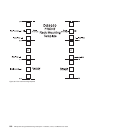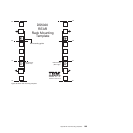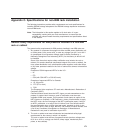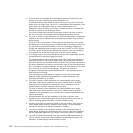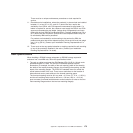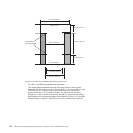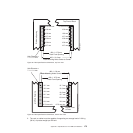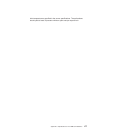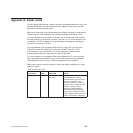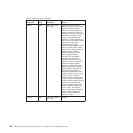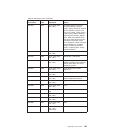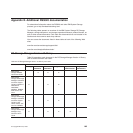For example, a four EIA drawer will have a maximum drawer weight of 63.6 kg
(140 lb.).
3. AC or dc power drawers need to be support based on equipment purchased for
the rack or cabinet. It is strongly recommended that you use a power
distribution unit that meets the same specifications as each unit already installed
in the rack. Each power distribution unit needs a dedicated power line. Rack or
cabinet power distribution device(s) must meet the drawer power requirements,
as well as that of any additional products that will be connected to the same
power distribution device.
The rack or cabinet power receptacle (power distribution unit, uninterruptible
power supply, or multi-outlet strip) must have a compatible plug type for your
drawer or device. The customer is responsible for ensuring the power
distribution unit is compatible with the rack or cabinet and assumes
responsibility for any and all agency certifications required.
4. The rack or cabinet must be compatible with drawer mounting rails, including a
secure and snug fit of the rail-mounting pins and screws into the rack or cabinet
rail mounting holes. You must use the IBM mounting rails that are shipped with
the IBM product to install it in the rack. The mounting rails that ship with IBM
products have been designed and tested to safely support the product during
operation and service activities as well as to safely support the weight of your
drawer or device. The rails must facilitate service access by allowing the drawer
to be safely extended, if necessary, forwards, backwards, or both.
Note: If the rack or cabinet has square holes on the mounting flanges,
additional hardware might be required.
5. The rack or cabinet must have stabilization feet or brackets installed both in the
front and rear of the rack, or have another means of preventing the rack/cabinet
from tipping while the drawer or device is pulled into its extreme front or rear
service positions.
Examples of some acceptable alternatives: The rack or cabinet can be securely
bolted to the floor, ceiling or walls, or to adjacent racks or cabinets in a long and
heavy row of racks or cabinets.
6. There must be adequate front and rear service clearances (in and around the
rack or cabinet).
The rack or cabinet must have sufficient horizontal width clearance in the front
and rear to allow the drawer to be fully slid into the front and, if applicable, the
rear service access positions (typically this requires 914.4 mm (36 in.) clearance
in both the front and rear).
If present, front and rear doors must be able to open far enough to provide
unrestrained access for service or be easily removable. If doors must be
removed for service, it is the customer’s responsibility to remove them prior to
service.
7. The rack or cabinet must provide adequate clearance around the rack drawer.
There must be adequate clearance around the drawer bezel so that it can be
opened and closed, according to the product specifications.
Front or rear doors must also maintain a minimum of 51 mm (2 in.) front, 203
mm (8 in.) rear, door to mounting flange clearance, and 494 mm (19.4 in.) front,
571 mm (22.5 in.) rear, side-to-side clearance for drawer bezels and cables (see
Figure 91 on page 174).
8. The rack or cabinet must provide adequate front-to-back ventilation.
For optimum ventilation, it is recommended the rack or cabinet not have a front
door. If the rack or cabinet has doors, the doors must be fully perforated so that
there is proper front-to-back airflow to maintain the required drawer ambient
176 IBM System Storage DS5020 Storage Subsystem: Installation, User’s, and Maintenance Guide



